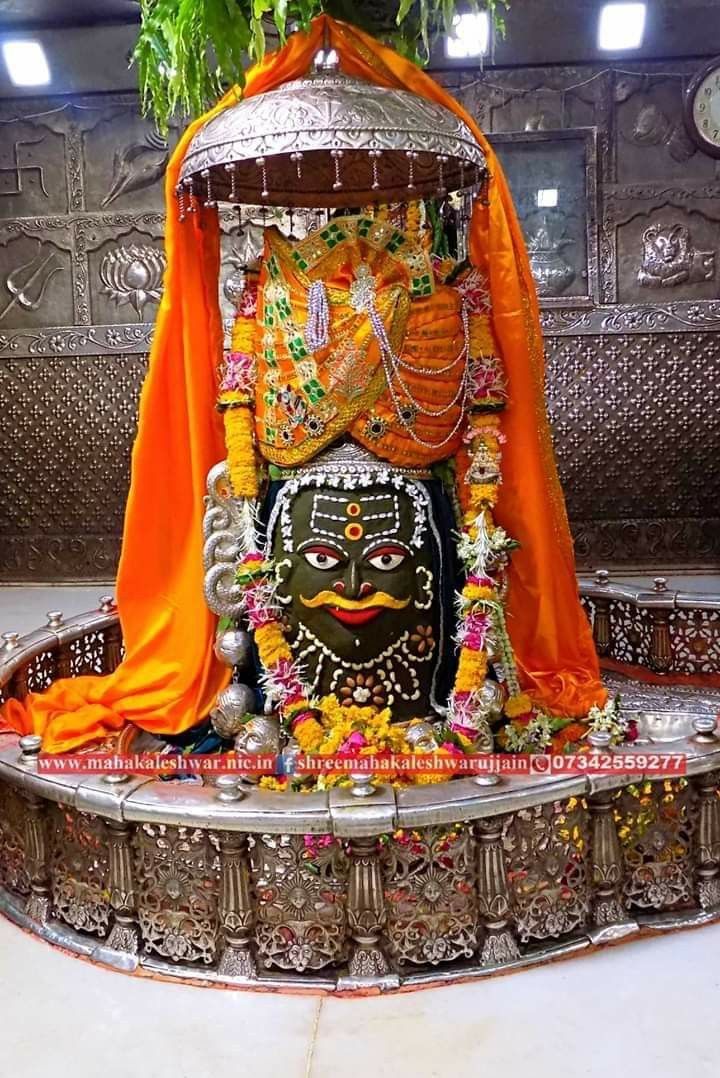The Mahakala Temple, one of India’s ancient and significant temples, is steeped in religious, architectural, and historical importance, tracing back to times that some might say touch the boundaries of pre-history. The origins of the temple are shrouded in mythology with the Puranas crediting its establishment to Prajapita Brahma, indicating its ancient inception.
Historical Timeline and Architectural Developments
Early References: The earliest historical reference to the Mahakala Temple dates back to the 6th century BC when Prince Kumarasena was appointed by King Chanda Pradyota to oversee the temple’s law and order. The temple’s presence is further attested by punch-marked coins from the 4th-3rd century BC, which bear the figure of Lord Shiva, the temple’s primary deity.
Architectural Style: Originally, the temple’s structure was simplistic, resting on wooden pillars without any sikharas (spires), as was common before the Gupta period. This architectural style is captured in classical texts, including Kalidasa’s ‘Raghuvansam’, where he refers to the temple as ‘Niketana’, indicating a significant yet unadorned abode of divinity.
Periods of Glory and Turmoil
The Gupta and Post-Gupta Eras: Throughout the Gupta period and beyond, the temple underwent various phases of enhancement and expansion, reflecting the prosperity and religious fervor of successive dynasties such as the Maitrakas, Chalukyas, and others. These periods saw the temple complex adorned with multiple structures, enhancing its grandeur.
Invasion and Restoration: The temple faced significant challenges during the eleventh century when it was targeted during an invasion by a Gazanavide commander. Despite the destruction, the resilience of the Paramaras led to its restoration, now incorporating the Bhumija style of architecture, favored by the Paramaras, characterized by star-shaped plans and intricate sculptural work.
Cultural Renaissance: During the medieval period, the temple not only survived but thrived, becoming a focal point of religious and cultural activities. It received patronage from Islamic rulers as well, who contributed to its upkeep, showcasing a unique blend of cultural respect and religious coexistence.
Maratha Contributions: By the eighteenth century, under the Maratha regime, further renovations were spearheaded by wealthy patrons like Sukhatanakar Ramchandra Baba Shenavi, enhancing its structure and religious facilities. This period marked another significant chapter in the temple’s long history of worship and architectural evolution.
The Temple Today
Today, the Mahakala Temple stands not just as a spiritual haven but also as a symbol of the enduring legacy of India’s rich cultural and religious history. It is a testament to the various phases of Indian architecture, the devotion of its patrons, and the temple’s ability to withstand and rise above the historical upheavals it has witnessed. The temple continues to be a major pilgrimage site, attracting devotees from all over the world who come to seek blessings and immerse themselves in its sacred aura.
In essence, the Mahakala Temple is more than just a place of worship; it is a living museum of architectural evolution, historical resilience, and a continuous tradition of spirituality that has spanned several millennia

